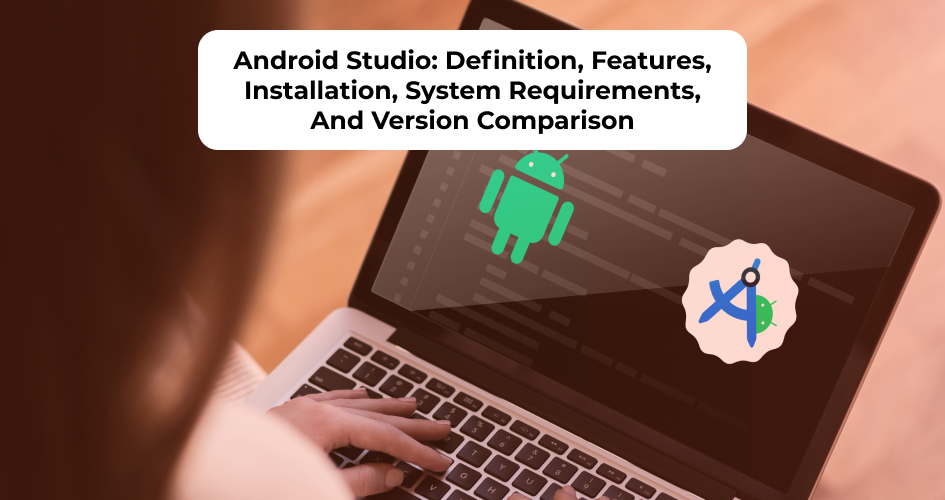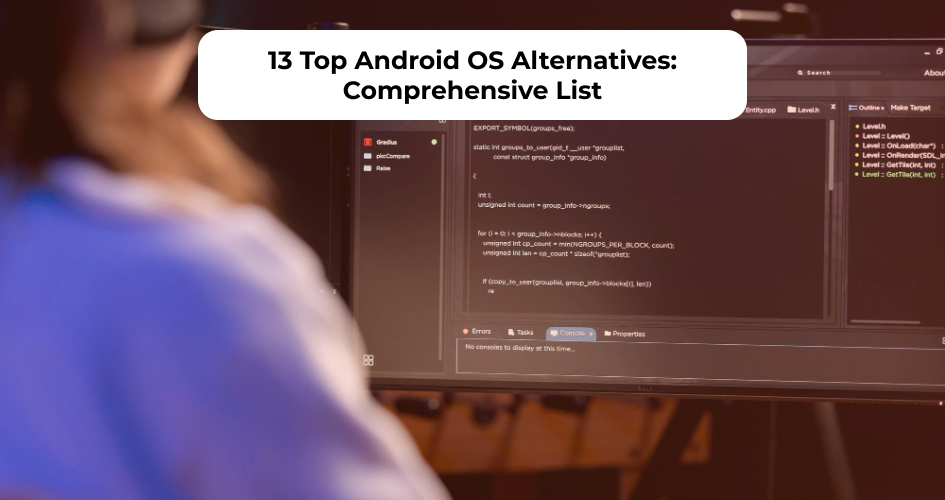Hybrid app development has gained significant traction in recent years.
This approach combines the flexibility of web technologies with the power of native app development, allowing developers to create apps that offer the best of both worlds.
When starting on a hybrid Android app development journey, choosing the right tools and frameworks is crucial for success.
In this article, we will explore the pros and cons of eight tools and frameworks tailored specifically for hybrid Android app development.
Whether you’re a seasoned developer or seeking professional Android development services, understanding these tools and frameworks will be helpful in making informed decisions and building high-quality hybrid Android apps.
1. Ionic
Ionic is a widely used open-source framework for building hybrid mobile apps with HTML, CSS, and JavaScript.
Created in 2013, Ionic remains to be the favorite of most developers on G2.
Pros
- Rich set of UI components. Ionic offers a wide range of pre-designed and customizable UI components, such as buttons, navigation menus, and cards, improving the development process and ensuring consistency in design.
- Cross-platform compatibility. The framework allows developers to build apps that run seamlessly on multiple platforms using a single codebase, including Android, iOS, and web.
- Open-source and community support. Ionic is an open-source framework with a large and active community of developers, so it can provide access to resources and documentation to help them overcome challenges and enhance their app development process.
Cons
- Dependence on web technologies. Ionic apps are built using web technologies like HTML, CSS, and JavaScript, so developers may need to rely on plugins to access advanced device functionalities.
- Limited access to native APIs. While Ionic provides access to native device features through plugins, developers may encounter limitations in accessing platform-specific APIs.
2. React Native
Developed by Facebook, React Native allows developers to build mobile apps using React.js and JavaScript.
This hybrid web app framework has been used to create apps at Facebook, Microsoft, and Shopify.
Pros
- Cross-platform development. This framework is applicable for Android, Android TV, iOS, macOS, tvOS, Web, Windows, and UWP.
- Hot reloading and live reload. React Native offers hot reloading and live reloading features, allowing developers to see changes in real time as they make modifications to the code that can speed up the development process.
- Large developer community. It has a vast and active community of developers, contributing to its growth and providing support, resources, and third-party libraries and components.
Cons
- Dependency on Facebook. React Native is developed and maintained by Facebook, which may raise concerns about long-term support, updates, and the direction of the framework.
- Limited access to complex designs. If you prioritize advanced designs or animations, React Native may not be the solution as this framework is known for its efficient UI rendering.
3. Xamarin
Xamarin is a Microsoft cross-platform mobile app framework, making it one of the most popular hybrid mobile app development frameworks.
The codebase works for multiple platforms, ranging from Android and iOS to Windows and Linux.
Pros
- Shared codebase. Xamarin enables developers to share codebase across different platforms, including business logic, data access, and backend integrations, promoting code reusability, consistency, and efficiency in development.
- C# and .NET ecosystem. It uses C# and the .NET framework, which are widely used and well-supported programming languages and frameworks, reducing the learning curve.
- Integration with Visual Studio. This hybrid app tool integrates seamlessly with Microsoft Visual Studio, providing powerful debugging, testing, and profiling capabilities.
Cons
- Large app size. Xamarin tends to generate larger file sizes compared to native apps due to the inclusion of the Xamarin runtime and framework libraries.
- License costs. While Xamarin offers a free community edition, larger organizations may need to purchase licenses for the tool’s enterprise features or Visual Studio subscriptions.
4. Flutter
Flutter is an open-source UI technology created by Google, which can be used to build cross-platform applications from a single codebase for the web, Android, iOS, Linux, macOS, and Windows.
Pros
- Low-rendering support. This feature enables Flutter to perform custom rendering operations, such as drawing shapes, text, and images, with high performance and efficiency.
- Design-specific adherence. Flutter conforms to two design guidelines: Material Design and iOS Human Interface. Meaning, it adapts to the specific characteristics and conventions of each platform while maintaining a consistent visual language.
- IDE and plugin support. This framework maintains official support for IntelliJ IDEA, Android Studio, Visual Studio Code, and Emacs via plugins.
Cons
- Immature ecosystem. Released in 2017, it may not have the same level of support and resources as more established frameworks like React Native.
- Large app size. Flutter apps tend to have larger file sizes compared to native apps, as they include the Flutter engine and framework libraries. This may impact download times and device storage space.
5. NativeScript
NativeScript is an open-source framework that lets developers write code using familiar web technologies like JavaScript, TypeScript, and CSS, helping the experienced ones write code faster.
Pros
- Native API reflection. Instead of needing extra layers to connect with each mobile platform’s API, NativeScript uses reflection to access the native platform’s APIs. This means that any new features added to a platform’s API become available right away.
- Flexible UI development. NativeScript offers a flexible and powerful UI development approach, allowing developers to create custom UI components using XML, CSS, and JavaScript.
- Angular integration. With NativeScript, you can use Angular to build cross-platform mobile apps and share large chunks of code between your web and mobile apps.
Cons
- Learning curve. NativeScript would be easier for developers with prior experience in web development skills, such as JavaScript, TypeScript, or Angular. If not, they may need time to become proficient in this hybrid web app framework.
- Limited customization options. If we compare to other frameworks, NativeScript provides a smaller selection of components and third-party libraries.
5. Onsen UI
Onsen UI is an open-source framework for building hybrid mobile apps using HTML, CSS, and JavaScript based on PhoneGap / Cordova.
Developers can create apps that work seamlessly on various operating systems, including Android, iOS, Chrome, and Windows.
Pros
- Responsive design. Onsen UI supports responsive design principles, allowing apps to adapt to different screen sizes and orientations.
- Rapid prototyping. The theme-roller feature in Onsen UI has saved developers time and money by providing standardized user experiences, allowing them to show the final results to clients faster.
- Ease of use. This framework offers a clear and intuitive API, making it accessible to developers of all skill levels.
Cons
- Limited customization. While Onsen UI offers a variety of pre-designed components and themes, customization options for complicated UI designs may be limited compared to other frameworks.
- Higher price. Recently, the tool has increased the price, but without fixing the bugs. It also has a smaller community, so it may have less public contribution and longer time for debugging.
6. Framework7
Framework7 is a versatile and user-friendly framework for building iOS, Android, and desktop apps.
It provides extra tools like Electron and NW.js, allowing you to create apps with native look and feel.
Pros
- Rich UI components. Similar to some other hybrid mobile app development frameworks, Framework7 offers a comprehensive library of pre-designed UI components and elements that are fully customizable.
- It’s free. This means developers can access its rich library of UI components, extensive documentation, and community support without any cost, an attractive option for startups, independent developers, and small businesses.
- Indispensable prototyping tool. Framework7 can show the working app prototype as soon as possible, allowing teams to iterate rapidly, gather feedback early, and make informed decisions about the app’s direction.
Cons
- Average documentation. The documentation may lack depth or clarity in certain areas, making it challenging for developers to fully understand and use all aspects of the framework.
- Reliance on HTML5 mark-up-based solutions. While this approach is familiar and convenient for developers accustomed to web development, it may not be suitable for those who prefer alternative technologies or markup languages.
7. Sencha Touch
Specifically built for the mobile web, Sencha Touch is supported by the JavaScript library.
The goal of this mobile app framework is to facilitate easy development of HTML5 based mobile apps running on Android, iOS, and Windows devices.
Pros
- MVC architecture. Sencha Touch uses the MVC pattern that separates the app data, the control code and view. The separation enables large scale apps to be flexible and easy to maintain.
- Widget components. The framework includes a set of graphical UI elements for mobile web apps optimized for touch input, such as buttons with device specific themes and effects, date picker and address, as well as a map with support for multi-touch gestures like pinch and zoom.
- Multiple transitions and animations. This hybrid web app framework offers eight in-built transition effects, such as cube, slide over or under the current element, and pop. It also supports common touch gestures from touch events by Android and iOS, and some touch enabled devices.
Cons
- Smaller community. Many people have seen less fresh content about Sencha Touch, mainly because it lacks specialized bloggers or creators that discuss this framework compared to other alternatives like Ionic.
- Dependency on Sencha Cmd. Sencha Touch relies heavily on Sencha Cmd, a command-line tool for building and packaging apps, adding complexity to the development workflow and may be intimidating for some developers.
8. Kendo UI
Kendo UI is a set of four JavaScript UI libraries that are built natively for jQuery, Angular, React and Vue.
Each is developed with consistent API and theming to help you achieve modern, responsive, accessible, and fast UI.
Pros
- Ready-to-use UI components. Add advanced JavaScript components into your new or existing designs easily, including grids, charts, and calendars. Every element is optimized for customizability and performance.
- Lower learning curve. With Kendo UI, starting a new mobile app project or switching frameworks won’t require a new license or a big learning curve since the APIs and theming are included and up-to-date.
- Extensive documentation and support. This framework provides comprehensive documentation and tutorials to help developers get started quickly and troubleshoot issues effectively. Additionally, Telerik, the company behind Kendo UI, offers dedicated support and forums where developers can seek assistance and share knowledge.
Cons
- License requirement. While Kendo UI offers a free version with limited functionality, the full-featured version requires a commercial license, which can be costly for individuals or small businesses.
- Workarounds are complicated. Despite its rich feature set, developers may encounter situations where implementing certain functionalities or customizations needs complex workarounds, which can be time-consuming and affect overall productivity.
Tips on Choosing The Right Tools and Frameworks
With the available options, choosing the right tools and frameworks for your development projects can be confusing.
Here are several tips to help you make the right decisions.
Understand Your Requirements
Before selecting any tool or framework, take the time to thoroughly understand your project requirements by considering factors such as:
- Project scope
- Target platforms
- Performance requirements
- Scalability
- Team expertise.
Evaluate Available Options
Research and evaluate the available tools and frameworks that align with your project requirements.
Look for options that offer the features, functionalities, and performance characteristics you need to achieve your project goals.
Consider Community Support
Choose tools and frameworks with active and supportive communities.
A strong community can provide valuable resources, documentation, tutorials, and community-driven plugins or libraries, as well as assistance and guidance when you encounter issues or challenges.
Assess Learning Curve
Consider the learning curve associated with each tool or framework.
Choose options that align with the skills and expertise of your development team, or be prepared to invest time and resources into training and skill development.
Evaluate Performance and Long-Term Viability
Evaluate the performance characteristics of each tool or framework, including factors such as speed, memory usage, and rendering efficiency, to ensure they meet your performance requirements.
Also, choose hybrid app frameworks with strong industry adoption.
Tools that are outdated or have limited adoption may have risks in terms of maintenance, compatibility, and future updates.
Seek Feedback and Recommendations
Don’t hesitate to seek feedback and recommendations from colleagues, peers, or industry experts who have experience with the tools and frameworks you’re considering.
Their insights and experiences can provide valuable guidance and help you make more informed decisions.
Conclusion
Each option comes with its pros and cons, so carefully evaluating your project requirements and team expertise before making a decision is essential.
You also need to consider the tool’s learning curve and performance.
Whether you opt for the flexibility of React Native, the strong Android performance of Flutter, or the versatility of Ionic, there’s a solution out there to suit your needs.
If you’re looking for professional expertise in hybrid Android app development, our mobile app development services are here to help.
With our team of experienced developers and a proven track record of delivering high-quality mobile applications, we can assist you at every step of the development process.
Partner with us to stay ahead in today’s competitive mobile landscape!





